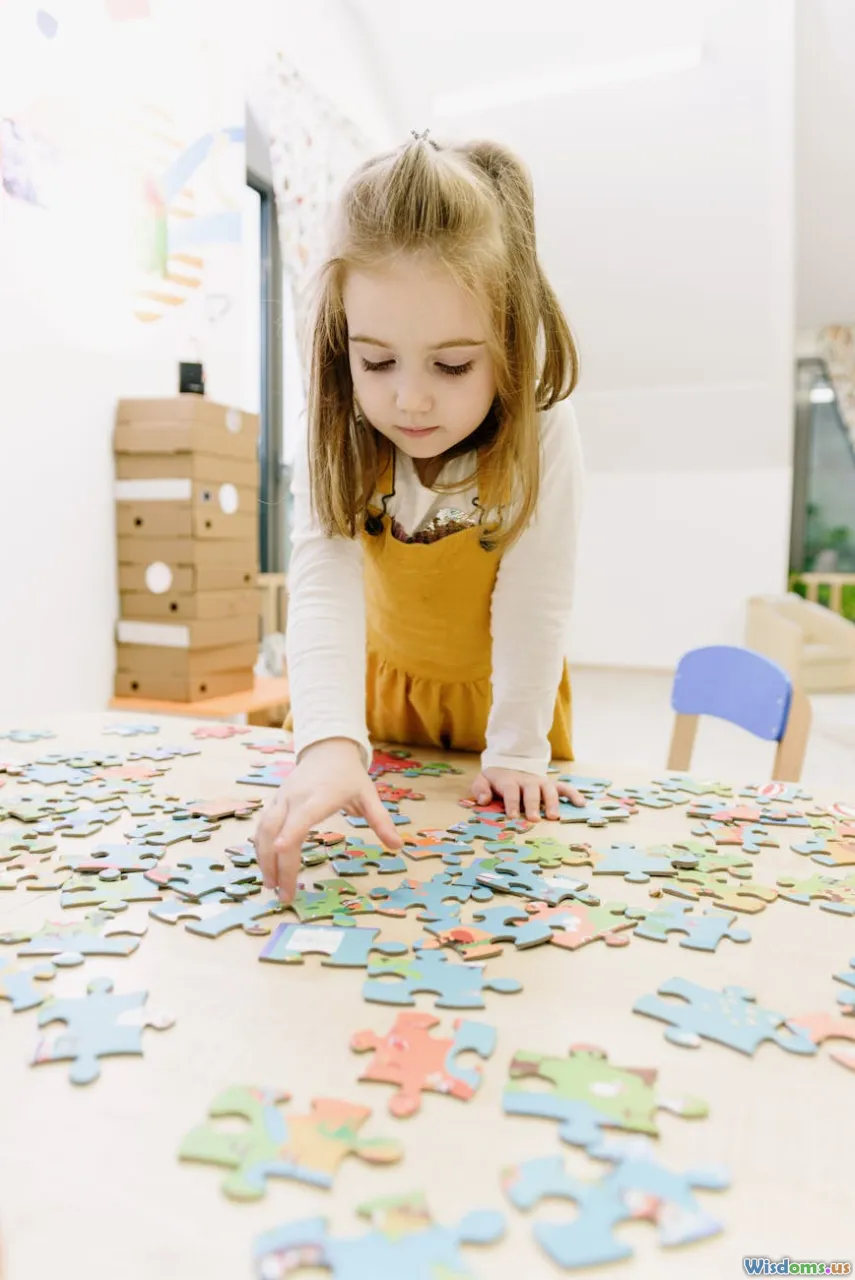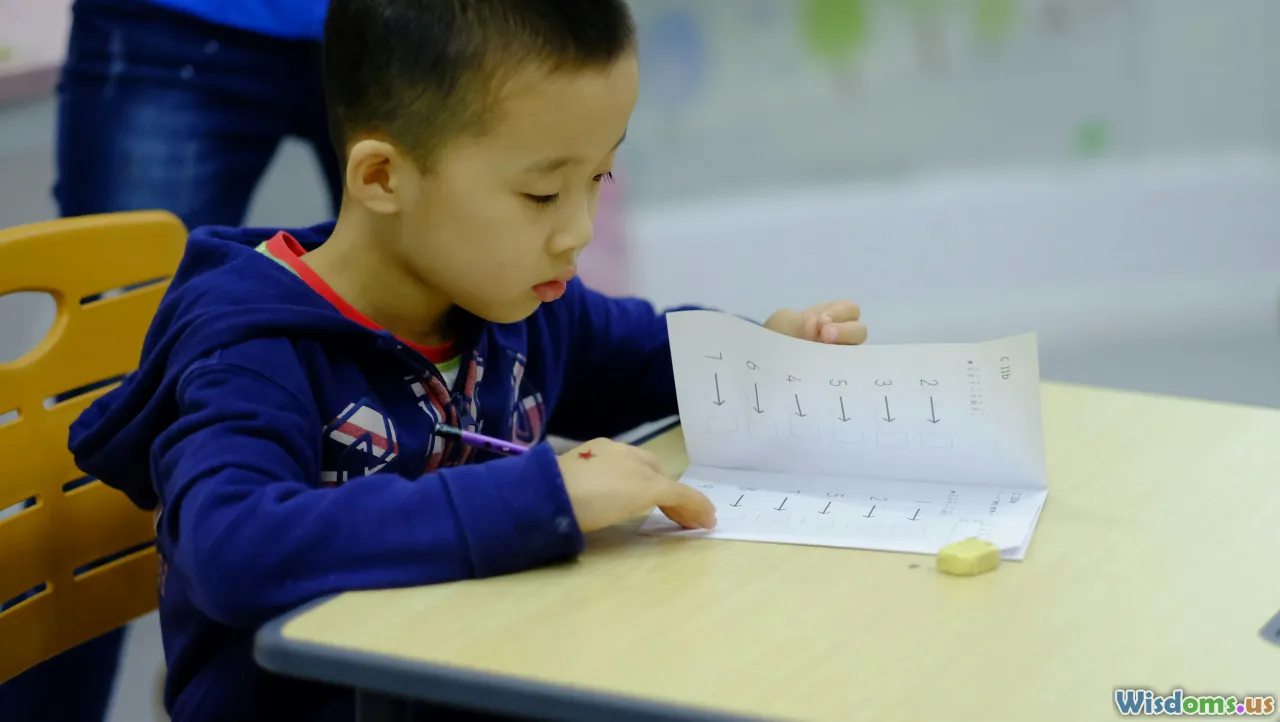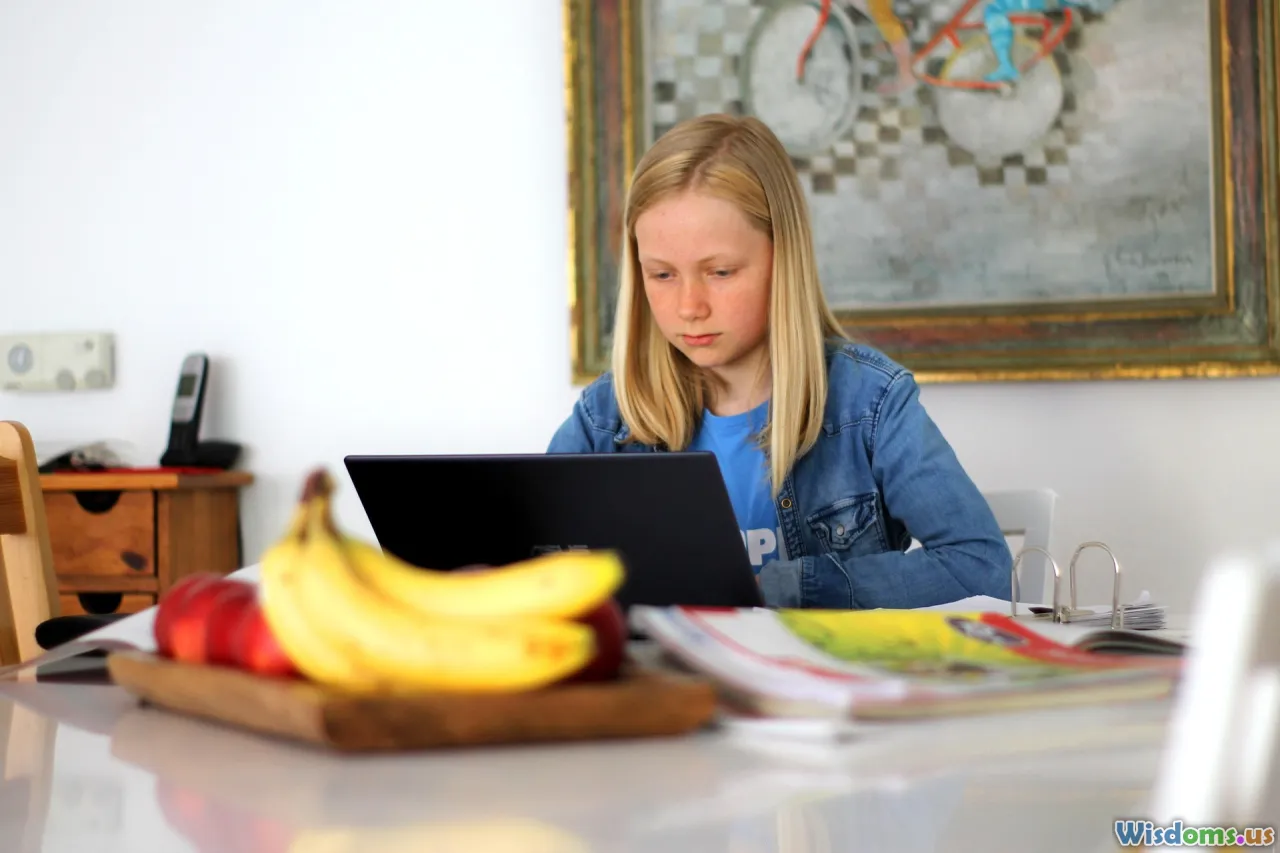
Why Unlimited Screen Time May Harm Your Child’s Learning
14 min read Exploring how unlimited screen time impacts children’s cognitive, social, and academic development. (0 Reviews)
Why Unlimited Screen Time May Harm Your Child’s Learning
In today's connected world, children have access to more screens than ever before. Smartphones, tablets, laptops, and televisions deliver entertainment and education at their fingertips. While technology has brought remarkable benefits to learning, the temptation to let children indulge in unlimited screen time is a pitfall every family must confront. Research and real-world experience suggest that when children's digital consumption goes unchecked, their cognitive, social, and emotional development can suffer. Let's explore why unlimited screen time may undermine your child's learning and discover actionable strategies that foster healthier habits and lasting curiosity.
The Brain Under the Screen’s Spell

Neurologists and educators agree: the human brain is most malleable during childhood, a period dubbed as the “critical window” for learning. Unrestricted digital exposure can reshape this window in unexpected ways. For example, studies published in JAMA Pediatrics have linked excessive screen time before age five with lower measures of later language development and executive function—the skills that include self-control, problem-solving, and memory.
When a child spends hours each day clicking through YouTube videos or playing endless rounds of digital games, these experiences typically replace vital face-to-face conversations and hands-on explorations. Unlike building a LEGO tower, making mud pies, or losing oneself in a classic storybook, screen-based interactions often provide instant feedback, rapid rewards, and predictable stimuli. While this might sound efficient, the effect can be addictive. Without limits, a child’s developing brain may begin to crave richer, real-world stimuli less frequently, preferring instead the passivity and passivity of the digital world.
Real-World Example: Language Skills
In Canada, researchers followed 2,400 preschoolers and found that kids with over two hours of daily screen exposure scored lower on language and cognitive tests than those with less than 30 minutes. Such findings emphasize how excessive digital media displaces precious interactive time with parents or caregivers—time proven to build vocabulary, narrative skills, and empathy.
The Drop in Deep Learning and Concentration

A typical app or web video is engineered for speed and entertainment. Children flood from one short-form video to the next, accustomed to vibrant visuals and constant novelty. But learning—whether it's reading, solving puzzles, or learning to play an instrument—thrives on sustained focus.
Frequent screen swapping can fragment a child’s attention span. This manifests over time as a struggle with deep concentration—a faculty essential for advanced academic skills and creative thinking. For instance, a study by the University of Washington found that elementary students who exceeded recommended screen time limits displayed higher levels of inattention and hyperactivity. Multitasking between digital inputs further impedes the child’s ability to give undivided attention to a single complex task.
Case in Point: Disturbed Homework Flow
Parents often report that children habituated to unstructured digital play find it difficult to engage in homework for even 15 minutes without a device. This constant need for stimulation makes quietly reflecting, reading challenging chapters, or even playing board games seem like insurmountable tasks. Experts call this the “dopamine treadmill” of digital media, a cycle that dulls the brain’s reward response to activities that truly build intellect and stamina.
Erosion of Critical Thinking and Problem-Solving

Some educational apps and games tout their abilities to "make learning fun." They certainly can, but only in moderation and with careful selection. Unlimited passive screen use—the sort where children absorb content without meaningful engagement—inhibits active, critical learning. Deep comprehension comes from wrestling with ideas, experimenting, and making mistakes, not simply tapping through predetermined answers recommended by a device.
Example: Overreliance on Educational Apps
Consider the difference between learning basic arithmetic by solving puzzle cards or physically manipulating blocks, versus repeatedly clicking answers on an app that encourages speed over reflection. In a classroom study in the UK, students who used hands-on math manipulatives scored higher on problem-solving tests and were more likely to apply concepts creatively than those who were offered calculations solely on a screen.
Activity Suggestion: Promote Analog Play
Encourage children to engage in activities that stimulate critical thinking, like building models, inventing games, or journaling. Allow digital media to supplement—not replace—the core of these experiences.
Impaired Social and Emotional Skills

Human connection fuels a child’s sense of belonging, confidence, and emotional intelligence. When screen interaction dominates a family’s evening, in-person connections wane. Research continues to reveal that unlimited or unsupervised device use is associated with delays in social development, increased loneliness and anxiety, and difficulties with conflict resolution.
Example: Stunted Social Cues Detection
Children develop empathy and social navigation skills from reading others’ body language, tone, and facial expressions—a task impossible with an emoji. In a pioneering experiment by UCLA, sixth-graders who spent five days away from screens improved significantly at detecting nonverbal emotional cues, while their peers who remained glued to devices did not.
Family Dinner: The Ultimate Screen-Free Workshop
By insisting on device-free meals, families offer children a daily arena for sharing conversations, reading the room, and learning to articulate thoughts. These moments build self-esteem and strengthen bonds—benefits that can’t be replaced by the isolating glow of personal screens.
Physical Health and Sleep Disruption

The effects of unlimited screen use are not only mental but physical as well. Emerging evidence links extended sedentary behavior to rising obesity rates among children. Blue light from screens disrupts circadian rhythms, reducing both the amount and quality of children's sleep.
Concrete Impacts: Sleep and Vision
- Sleep: Harvard researchers found that school-age children who used screens close to bedtime went to sleep later and experienced poorer sleep quality. The consequences: worse mood regulation, reduced memory retention, and difficulty focusing in school.
- Vision: Eye doctors report rising rates of computer vision syndrome among children—marked by headaches, dry eyes, and blurred vision—resulting directly from digital overuse.
- Exercise: With screens acting as digital babysitters, physical activity drops. The World Health Organization recommends at least 60 minutes of movement each day for children—with heavy screen time crowding out this essential need.
Proactive Approaches for Parents
Aim for well-lit environments, mandatory screen breaks, and device curfews an hour before bed. Replace a chunk of daily video time with activities like nature walks, dancing, or sports.
The Myth of Educational "Unlimitedness"

Many parents assume educational platforms are all upside, dismissing time limits as unnecessary if the content is “good.” However, unlimited access—even to high-quality educational apps—rarely leads to optimal results. Abundant choices can dilute effort among too many shallow activities rather than encouraging depth.
Example: Digital vs. Deep Reading
Digital storybooks offer tremendous value, but the act of flipping pages, pausing over illustrations, and asking questions creates deeper comprehension than flipping or swiping through endless e-books. Moreover, digital platforms often come with pop-up ads or recommendations that distract rather than enhance.
Moderate, Guided Use Maximizes Benefits
Research from the American Academy of Pediatrics suggests optimal screen use is guided and limited. Joint media engagement—where a parent partakes and discusses the digital activity—results in richer gains than when a child is left to navigate alone. This is true whether a child is watching nature documentaries or solving math problems online.
Setting Boundaries Without Battles

Families may fear that resisting digital overload will lead to arguments and isolation. Yet the evidence shows that clear, empathetic boundary-setting fosters stronger relationships and lasting habits.
Actionable Advice: Building a Healthy Routine
- Model Digital Discipline: Children mirror adults. If parents set down their phones at dinner or designate “unplugged hours,” children are more likely to follow suit.
- Create Screen-Free Zones: Make bedrooms, the dining table, and family leisure areas device-free environments.
- Schedule Tech Time: Decide together on daily device parameters—both for schoolwork and recreation.
- Promote Alternative Fun: Invest in puzzles, art supplies, outdoor equipment, and regular family excursions. Celebrate tech-free activities by treating them as special, engaging learning adventures.
- Communicate Expectation Changes: Let kids know the reasons for limits. Emphasize how screens are tools—not toys—and how real learning is an adventure that starts offline.
Example: The Family Digital Contract
Some families co-create a “digital contract” detailing agreed-upon screen limits and responsibilities. When children help set the rules, they are more likely to internalize them, leading to fewer power struggles and more buy-in.
Rethinking the Role of Technology

Unlimited screen time is a modern illusion: there's nothing limitless about a child's emotional bandwidth or neurological resilience. Mindful, age-appropriate digital use can unlock new vistas of creativity, connection, and learning—but this only works when framed within structure and intention.
When families actively curate digital experiences, balance media use with tactile, real-life exploration, tune into children's needs, and communicate openly, technology becomes an ally rather than a distraction. Resisting the allure of unlimited access demonstrates to children that their well-being and learning still come before convenience.
In a world where every device promises a universe of content, the best gift we can give our children is intentional time. Letting curiosity, not algorithms, guide discovery ensures that children grow not only to master technology, but to live, think, and flourish beyond its glow.
Rate the Post
User Reviews
Popular Posts


















